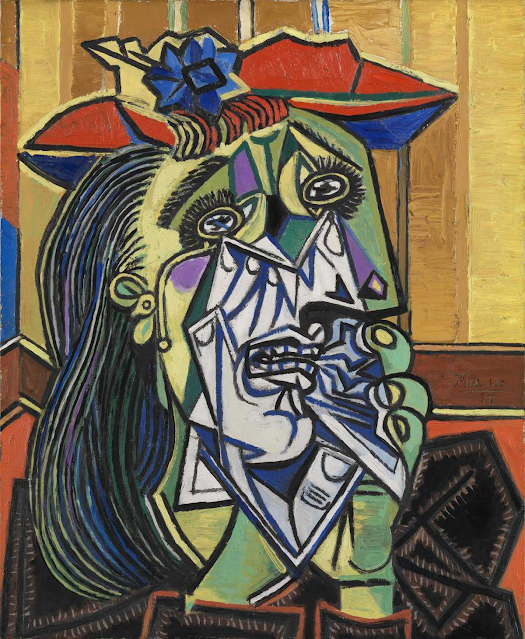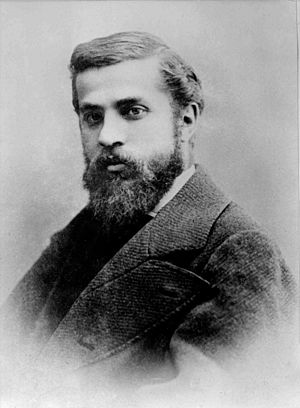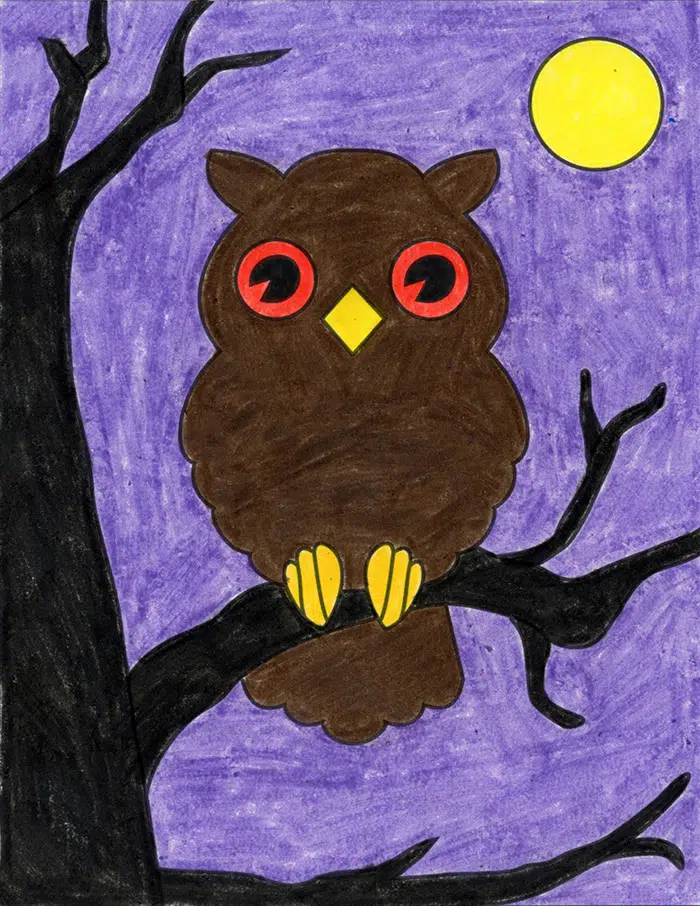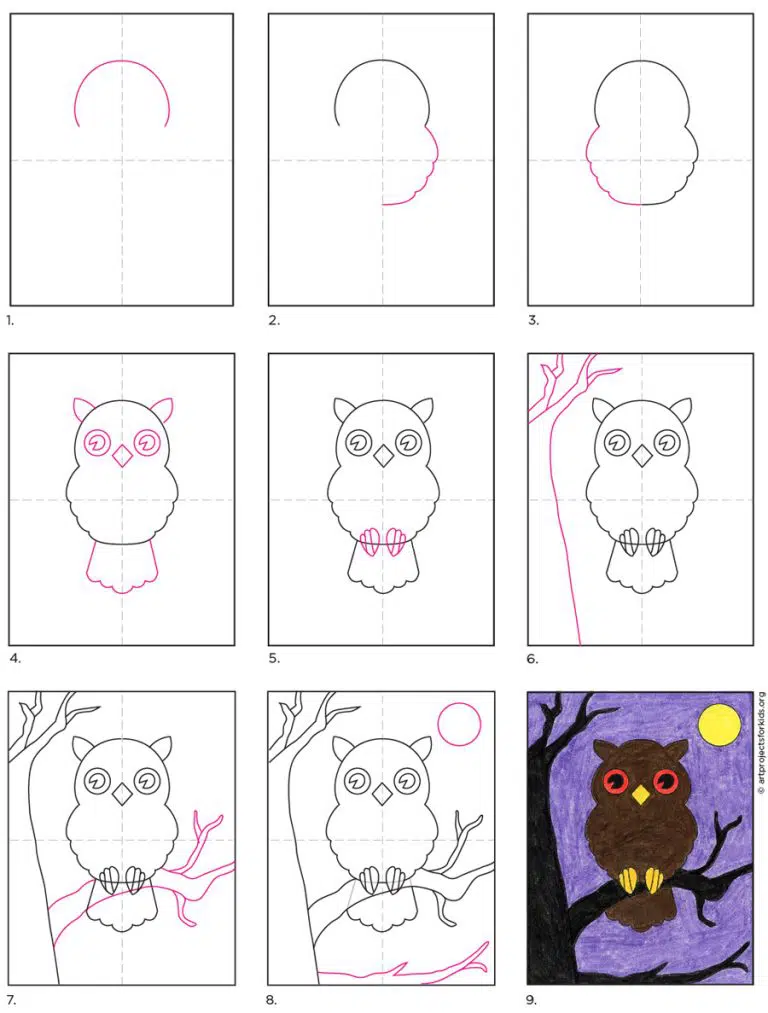Unit 4: Pablo Picasso
WHO IS PABLO PICASSO?
Picasso was born in Malaga in Spain in 1881, but in 1904 when he was 23 he moved to Paris. This is because Paris was the capital of the avant-garde, which means cutting-edge and very cool. Picasso became friends with lots of artists and writers, like Georges Braque who he invented cubism with; and a writer called Gertrude Stein who collected art wrote a cubist book. He became interested in art from other continents too. You can see some of these influences in his painting.
Pablo Picasso is one of the most famous artists of the twentieth-century. Why? Because he was brilliant at drawing. People really loved his doodles. What do you think of the drawing above? Look at how he has used colour…how many colours can you see? What objects are in the picture?
Even as a child he was better at drawing than many adults. He could draw and paint just about anything, and in any style. He liked to experiment and try out new ideas, which is important if you are an artist, because the world is always changing. Picasso helped us see the world in new ways.
Pablo Picasso
Horse with a Youth in Blue (1905–6)
The Studio (1955)
THE COLOURFUL STAGES OF PICASSO'S LIFE
Picasso was so experimental, and created so many different kinds of art that historians have divided his life and the art he made into stages. The Blue Period and the Rose Period came first (when he used lots of blue and pink to make paintings). These were followed by primitivism, cubism, classicism (when he created more traditional or classic artworks), surrealism, wartime and Late Works.
WHAT IS CUBISM?
One of his most famous periods is the cubist period. The painting below is one of his cubist pictures. Cubism is when the artist paints an object, like a bottle, from lots of different angles all in the same picture. So you see the front, the back and the sides of the bottle at the same time. In a way, it’s a bit like having x-ray eyes!
Pablo Picasso
Bowl of Fruit, Violin and Bottle (1914)
Lent by the National Gallery 1997
Look how expressive this artwork is!
Pablo Picasso
The Three Dancers (1925)
Pablo Picasso
Weeping Woman (1937)
HAVE A GO
What do you think of Pablo’s work? If you drew a portrait of your best friend in the style of Picasso, how would it look?
Pablo Picasso
Portrait of a Woman after Cranach the Younger (1958)
YOU MIGHT LIKE

Antoni Gaudí i Cornet (25 June 1852 – 10 June 1926) was a Spanish architect. He was born in Reus, in Catalonia, and became a leader of Catalan modernism. Gaudí's works are in his own distinctive style. Most are in the Catalan capital of Barcelona, especially his greatest work, the Sagrada Família.
He got some ideas from neo-Gothic art, Art Deco and Oriental techniques, and became part of the modernist movement in the late 19th and early 20th centuries.
Between 1984 and 2005, seven of his works were declared World Heritage Sites by UNESCO. The seven works were: the Park Güell, the Palau Güell and the Casa Milà; the Nativity facade, the crypt and the apse of the Sagrada Família, the Casa Vicens and the Casa Batlló in Barcelona, and the crypt of the Colònia Güell in Santa Coloma de Cervelló.
Gaudí's Roman Catholic faith intensified during his life and religious images permeate his work. This earned him the nickname "God's Architect", and eventually led to his beatification in 2011.
His work had an organic style inspired by nature. Gaudí rarely drew detailed plans of his works, instead preferring to create them as three-dimensional scale models and molding the details as he was conceiving them.
Gaudí died on 10 June 1926 in Barcelona, Spain after being hit by a tram, aged 73.
Let's see Antoni Gaudí in Barcelona: the 10 Major Works👇
https://historylists.org/architecture/list-of-top-10-antoni-gaudi-works.html
Antoni GAUDÌ - Parc GÜELL
Antoni GAUDÌ - Parc GÜELL
St Patrick's Day Crafts to make - fun ideas to make Leprechauns and Shamrocks
MAKING A PERSUASIVE POSTER
Posters and
paintings have long been used to influence how people think or feel about
certain ideas.
Design a persuasive poster to convince teachers that homework or tests are a bad thing.
Materials
Poster paper
Paints
Pens
Scissors
Glue
Craft materials
Guernica is a world-famous painting by Pablo Picasso. It is one of the world's greatest anti-war paintings. It is a very large painting (a mural) which shows the bombing of the Spanish town of Guernica in 1937 during the Spanish Civil War.
The Spanish Republican government asked Pablo Picasso to paint a large mural for an art exhibition in Paris. It shows how people, as well as animals, all suffer because of the tragedies of war. The painting soon became so famous that it was seen as a world symbol for peace. The fame of the painting helped to bring the Spanish Civil War to an end.
Guernica is navy blue, black and white, 3.5 metre (11 ft) tall and 7.8 metre (25.6 ft) wide, a mural-size canvas painted in oil. It hangs in the Museo Reina Sofía in Madrid.
There is a project where children shows peace… and that´s what we´re doing in English Art.
We´re colouring it, making it funny!
The life of the Spanish painter Francisco Goya
Goya for children
Goya's Winter Trees - A Value Study
12 x 18 Medium and Light Gray construction paper
6 x 18 White Drawing Paper
Tempera Paint: Black and White
Mixing Trays, small paint brushes
Glue, Scissors and Pencils.
Scary Halloween Story For Kids - Too Much Candy



























No hay comentarios:
Publicar un comentario